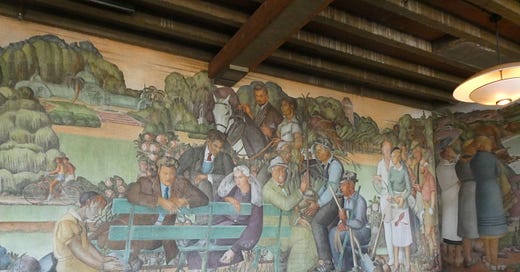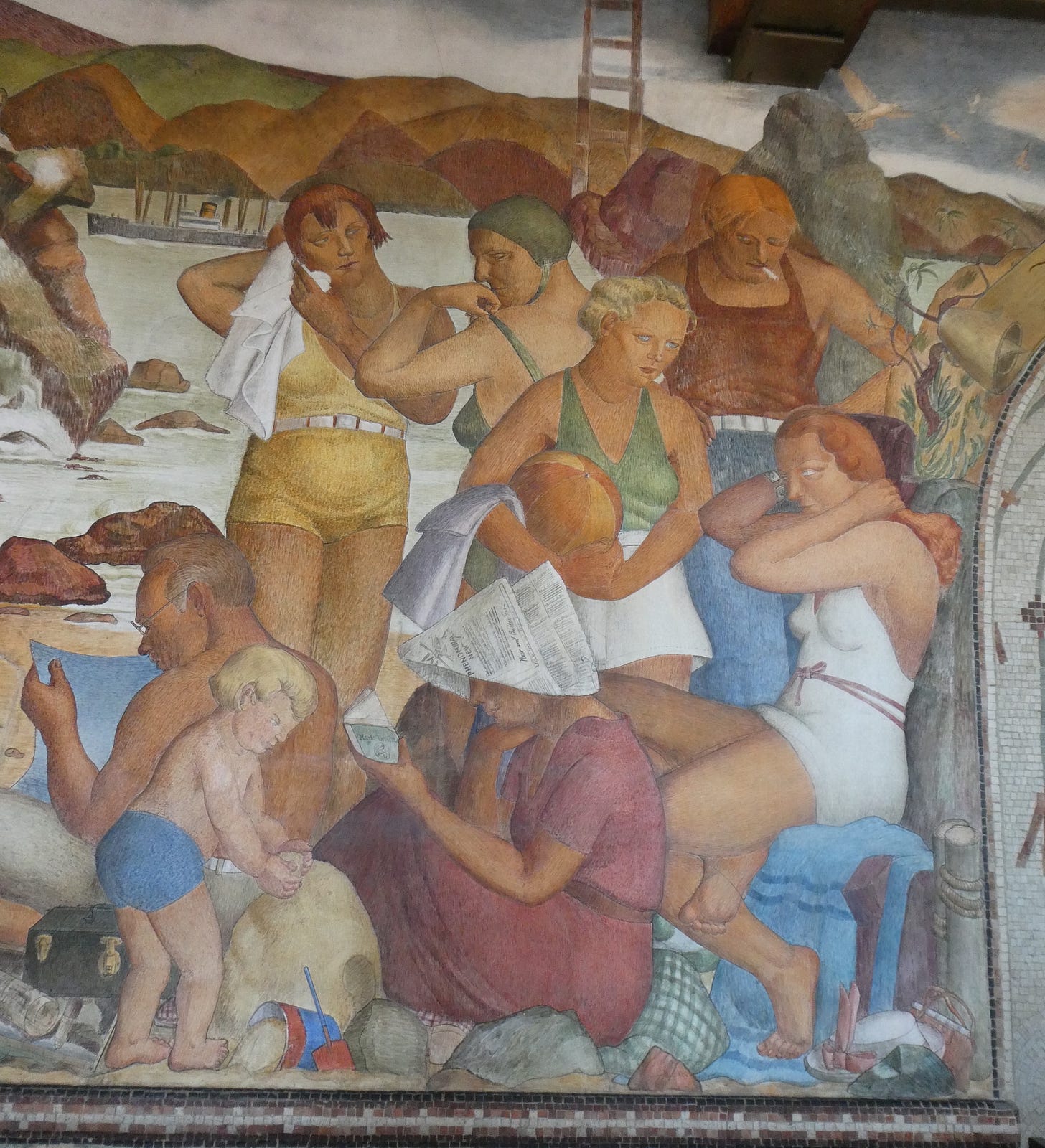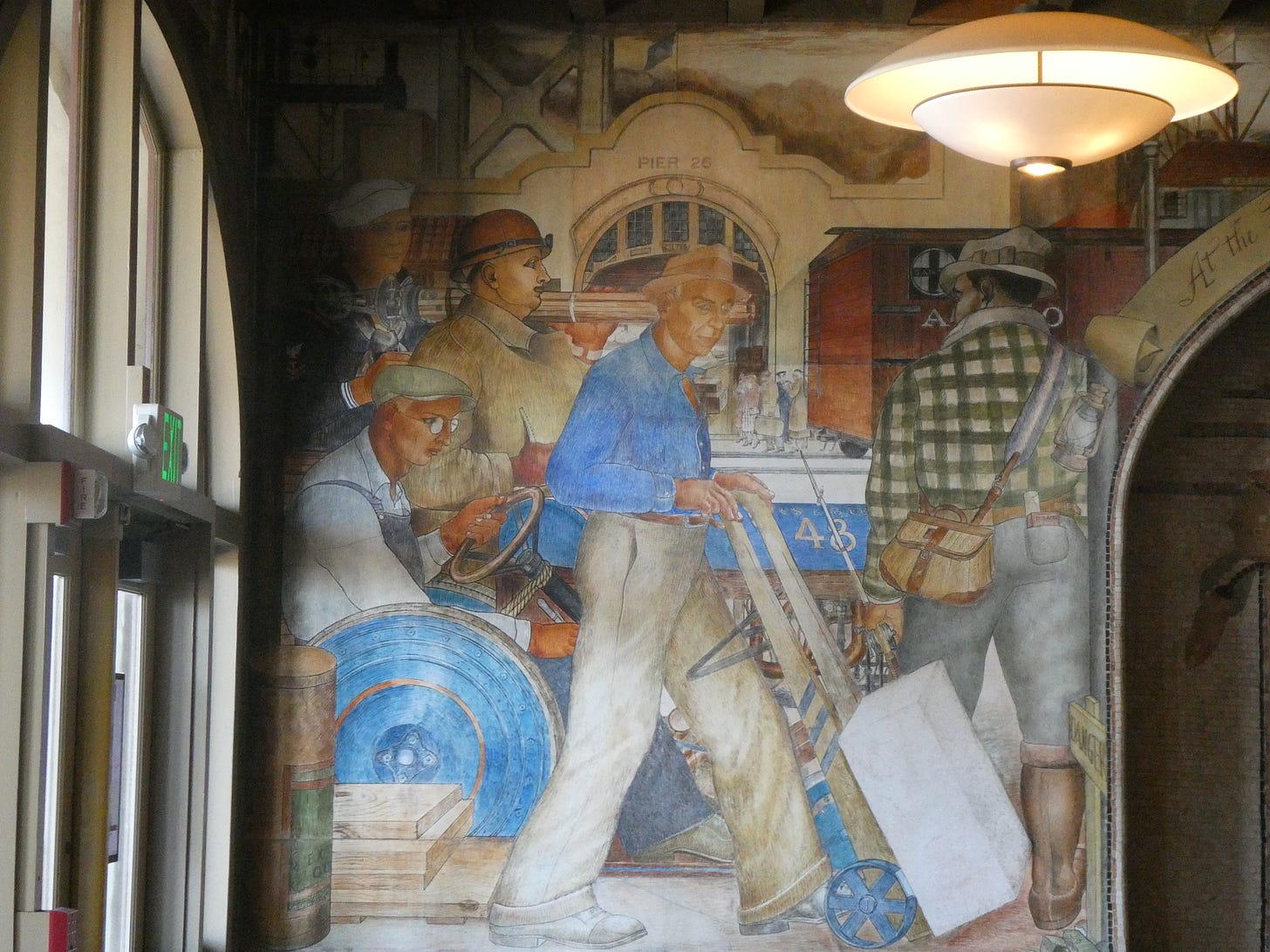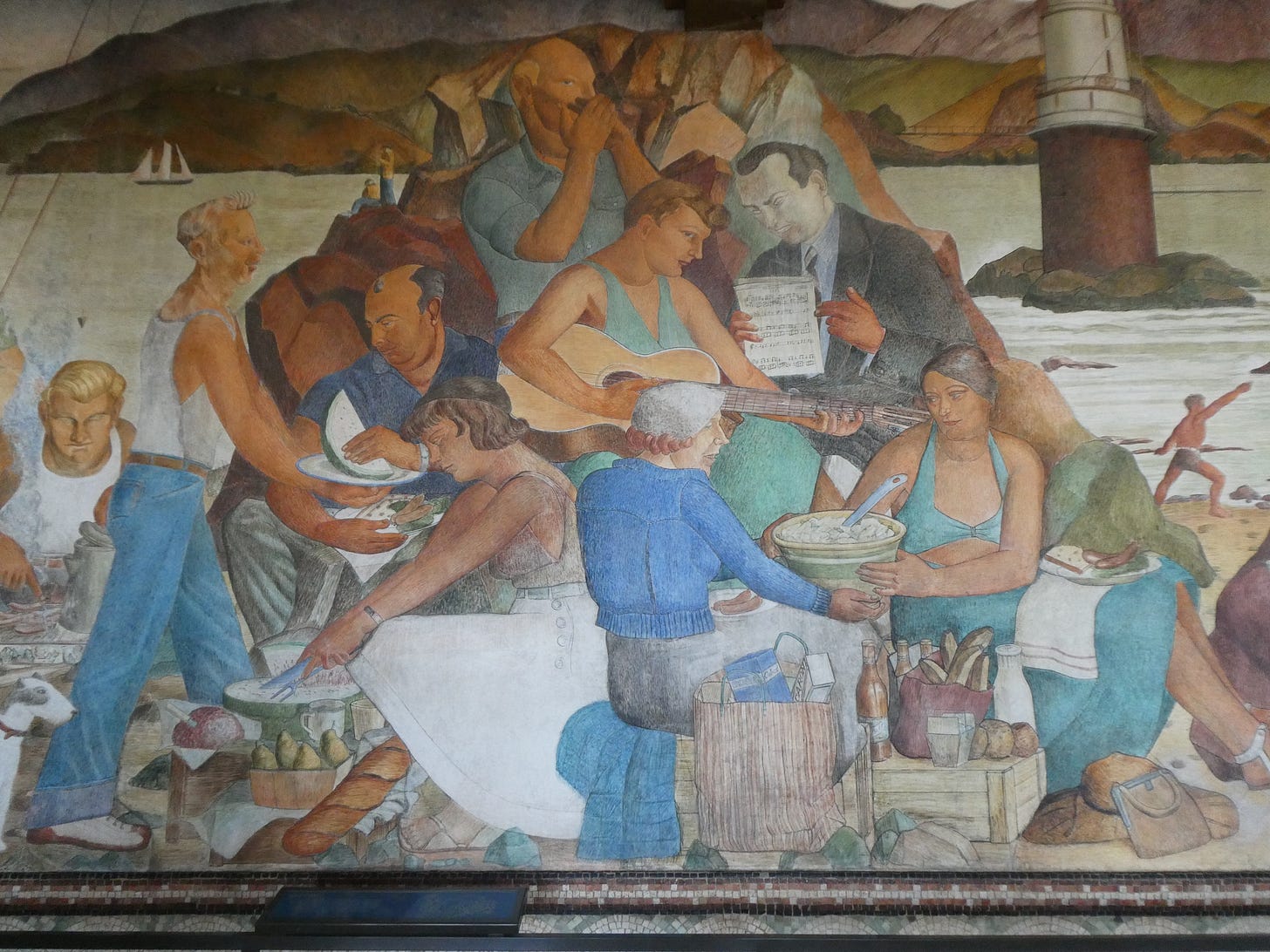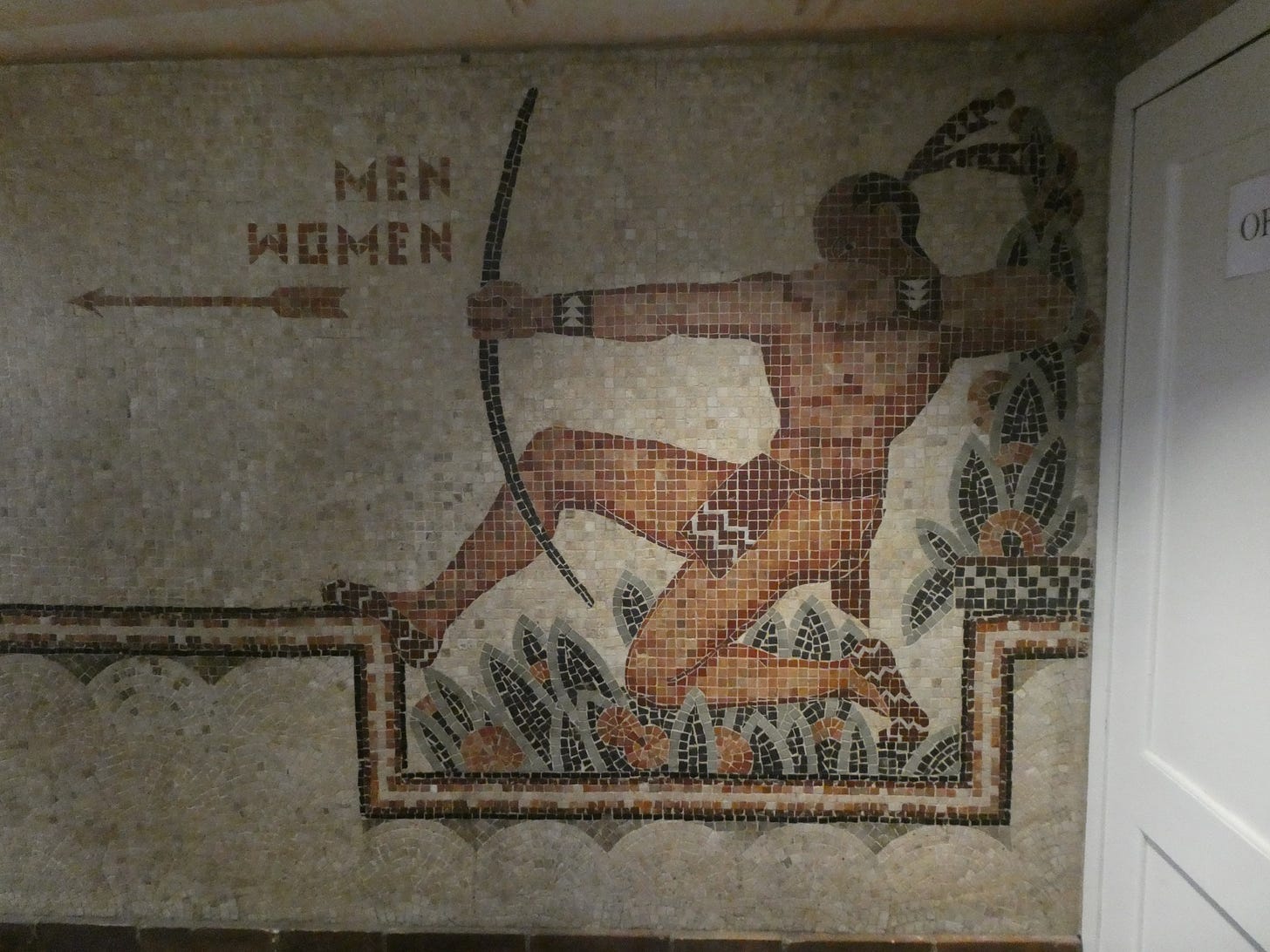Free Art Friday: The Beach Chalet, San Francisco
Erika Esau, Art Muse Lecturer - Northern California
When a Bay Area friend learned that we were going to be in San Francisco cat sitting for a week, he bombarded us with suggestions of places to visit. When I expressed interest in seeing the ruins of the famed Sutro Baths at the beach end of Golden Gate Park (another free attraction involving some easy hiking), he recommended the nearby Beach Chalet for lunch. I had never heard of it before, nor did my friend give me any more information about it; I thought it was just going to be a beachside café with nice fish sandwiches.
Imagine my excitement when we entered this 2-story building, right on the shoreline of Ocean Beach at the western edge of the Park, and found the walls covered in spectacular murals, perfectly preserved! The restaurant is upstairs, but anyone stepping into the building can walk around the foyer to study these treasures. They are, of course, the product of the Federal Arts Project of the Works Progress Administration — the WPA — that Depression-era project funding artists to produce public art. This was the only time the U.S. government has carried out such a program to support art and artists to create accessible art for everyday people. I am a huge fan of its history and am always happy when I stumble upon the remnants of this worthy part of FDR’s New Deal programs.
The Beach Chalet was built in 1925 by local architect Willis Polk as a city-run restaurant and changing rooms for beachgoers but was never quite successful. In the early 1930s, the city turned the place over to society mavens Hattie and Minnie Mooser, who were well-connected enough to be granted a WPA contract to create murals and mosaics on the Chalet’s first floor. As an appropriate artist for the task, the Moosers recommended to the administration a well-known French-American artist living in the city, Lucien Labaudt (1880-1943). Labaudt was commissioned to create murals celebrating everyday life in the city, with an emphasis on the beach and the Park, and including depictions of prominent people known in the city.
Having already worked on the city’s Coit Tower’s murals, Labaudt used here a true fresco technique, whereby the paint is embedded into the plaster. For this reason the murals have survived brilliantly throughout the building’s vicissitudes; it was at one time a sleazy bar and illegal gambling locale before being shuttered in the 1980s. In 1993, after years of neglect and on the verge of being destroyed, the building gained Historical Landmark status, and then received a federal grant to restore the artworks. The restaurant above is now thriving, and the first floor includes some displays of the building’s history along with plaques describing the many people that Labaudt included in his panels.
The purpose of the murals, as with all the WPA-funded public works, was to present positive portrayals of American life, to lift the spirits of the populace in the struggling years of the Depression. Among the many friends Labaudt painted in leisurely scenes, the artist also painted himself, as the taciturn beachgoer reading the newspaper with his back turned to the crowd.
His scene of the waterfront shows a worker benignly pushing a hand cart; the figure is a portrait of the labor organizer Harry Bridges, instigator of the infamous 1934 dock strike.
The largest wall depicts, among other local identities, John McLaren, Superintendent of Golden Gate Park for 53 years, and the artists and Bohemian Club members Helen Lundeberg and Lorser Feitelman. Labaudt’s details are charming, making a careful study of the panels an entertaining exercise. I delighted in finding a wonderful crab, a squirrel being fed by a fashionable lady sitting next to McLaren, and a copy of Mark Twain’s “Jumping Frog of Calaveras County” being read by a woman on Baker Beach.
The Chalet’s mosaics are just as charming, created by Primo Caredio; my favorite is the Indian with bow and arrow pointing to the restrooms. Woodworker Michael von Meyer carved octopus and mermaids entangled in the staircase bannisters. Also painted above the arches are quotations about California by celebrated local writers such as Ina Coolbrith and George Sterling. And all of this was created solely to be enjoyed by the public! As a devotee of the federally-funded public arts programs of the 1930s, I am so thankful to have found this beautiful example of a time when, for a brief moment, America saw the value in creating artwork that anyone could appreciate and enjoy for no cost.
Lucien Labaudt was killed while in the service during World War II, and in honor of his death had a U.S. naval vessel named after him. His wife ran a gallery in his name in San Francisco, well into the 1960s. He created here a time capsule of San Francisco people and their everyday activities. Before entering Golden Gate Park at the entrance point on the northern side of the Beach Chalet, take a moment to step inside and enjoy these playful renderings of the city 80 years ago. Oh, and by the way: the fish sandwiches at the restaurant are indeed very good!
All photos courtesy of Erika Esau.

